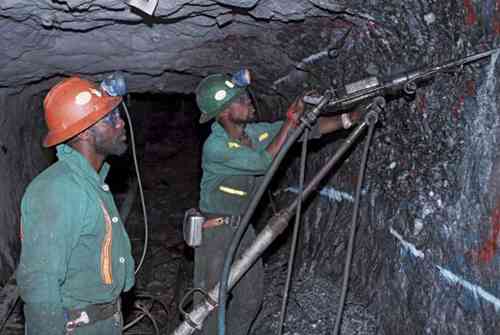
IN its annual State of the Mining Industry Report last month, the Chamber of Mines of Zimbabwe said the mining sector will miss its 2023 US$12 billion revenue forecast by about 42%.
The industry, already grappling to shake off high costs, has not been spared by rolling blackouts roiling the economy.
Blackouts deteriorated last month, after the Zambezi River Authority said water levels at Lake Kariba had dropped to critical levels.
It ordered national power utility, Zesa Holdings, to halt production at Kariba south hydroelectric power plant, which currently generates about 60% of national power demand.
The Chamber of Mines said mining revenue will, instead, come through at US$7 billion next year.
This figure is US$5 billion less than projected, demonstrating the impact of economic troubles on an industry that is seen as vital to recovery.
Zimbabwe's main minerals are gold, platinum group metals (PGM), chrome, coal, diamonds, and lithium.
The Chamber of Mines said forex shortages, capital constraint, out-dated technologies and equipment are among key factors holding back the industry.
- Drama around Ndebele king making a mockery of the throne
- Mines propose fresh power import deal
- Motorist robbed while relieving self
- Umkhathi Theatre Works on King Lobengula’s play
Keep Reading
“The prospects for mineral output growth for 2023 are generally lower than those recorded for 2022,” the Chamber said.
However, it said in the year 2023, industry capacity utilisation is projected to rise to 84% from 81% in 2022. Ferrochrome, coal, and gold will boost capacity utilisation.
Miners are required to surrender 40% of their export proceeds to the central bank, which limits their production capability.
The mining sector is capital intensive, and most of its implements are imported.
But with the current thresholds, boosting production has become a toll order.
Further, as most mining equipment is becoming archaic, continual maintenance or replacement costs requires firms to raise foreign currency.
Experts also say high level of corruption has been discouraging growth in the industry.
“Mining can transform this country. This country can be a US$200 billion economy purely based on mining. But we have to do certain things right,” Harare East member of parliament, Tendai Biti told Parliament last week.
“We cannot give away our mining rights as if they are cakes at a wedding. Anyone who wants, we give him a lithium mine. Anyone who wants, we gave him iron ore.”
Biti has first-hand experience in public administration, having been finance minister during Zimbabwe’s government of national unity between 2009 and 2013.
Poor administration of mining claims has led to tax avoidance and other manipulations.
Government has in the past offered platinum as collateral on loans, which is worth over US$20 billion at today's market pricing for a US$200 million loan from China in 2006.
Transparency in mining contracts going forward will see the country benefitting massively from its mineral resources, experts say.
The other issue that affected mining during the year was high costs.
Mining’s biggest costs include energy, resource (and equipment), and safety.
Suppliers during the year raised prices to maintain value in an inflationary climate.
With increasing load-shedding from six to 19 hours daily, several mining enterprises are now forced to operate on generators, further spiking the cost of production.
Capital restrictions were also some of the reasons that saw the mining sector missing the US$12 billion target.
Like 2022, mining executives expect a poor investment climate in 2023.
“The main constraints identified by mining executives in the survey as adversely affecting investment include unstable fiscal regimes, high operating cost structure, uncertainty on mining policy and legislation, and power supply shortages,” the chamber said.
Investors prefer competitive markets.
A recent report by the Centre for Natural Resources Governance (CNRG) noted that the urgency to build a $12 billion mining economy has come at a price.
CNRG, which is a local natural resources watchdog, noted this after carrying out a fact-finding mission on the mass eviction of 500 families at Ran Mine.
The "new owners" of the Ran Mine, a dormant gold mine 100 kilometres northeast of Harare, Zimbabwe's capital, gave 500 former workers' families 48 hours to leave in April.
“Human rights and environmental degradation are being overlooked and are fast becoming endemic in the scheme of things,” theCNRG said in the report.
“It is incumbent upon progressive stakeholders in the extractives industries to hold mining outfits to account for their actions in all manner of their interaction with the environment, host communities and acquittal of requisite dividends to the taxman.”
The US$12 billion target can only be achieved if a holistic approach is taken towards addressing these bottlenecks, experts say.






